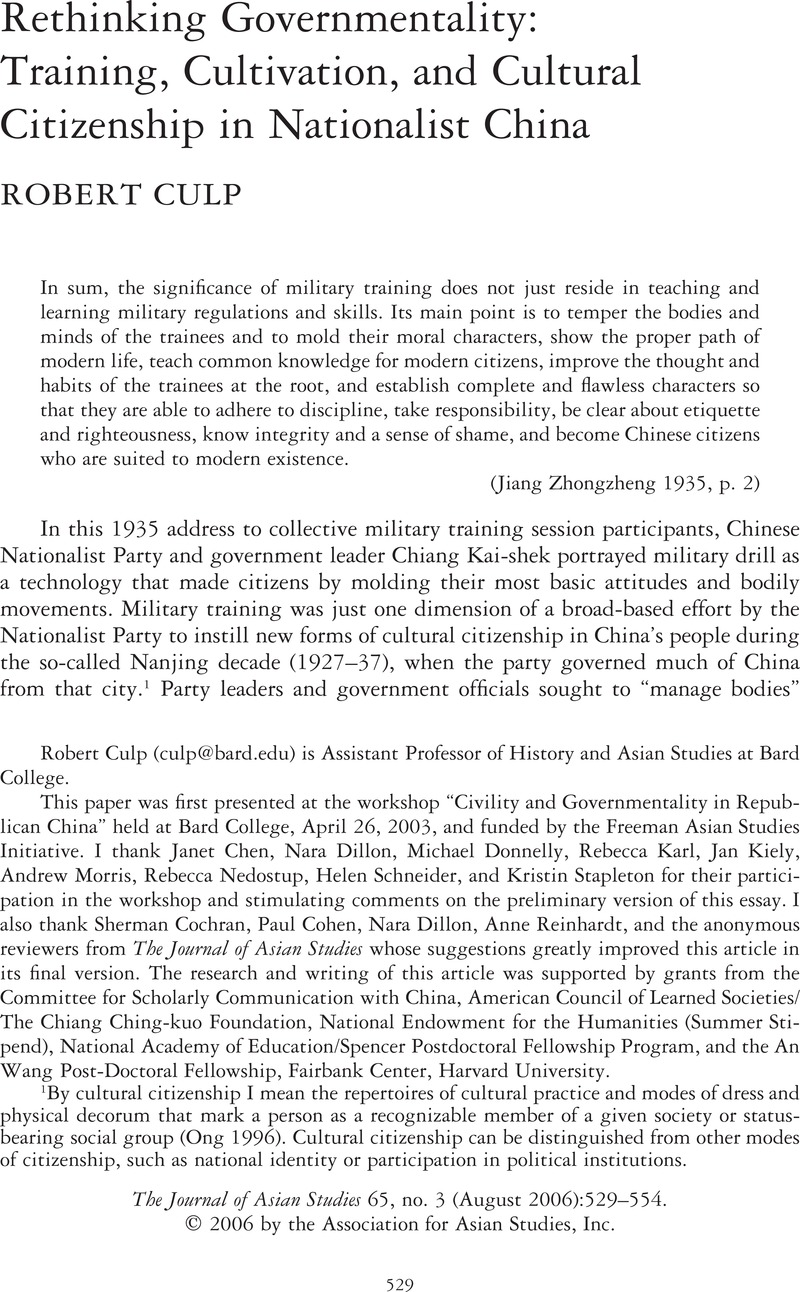Crossref Citations
This article has been cited by the following publications. This list is generated based on data provided by Crossref.
Lin, Yi
2011.
Turning Rurality into Modernity:SuzhiEducation in a Suburban Public School of Migrant Children in Xiamen.
The China Quarterly,
Vol. 206,
Issue. ,
p.
313.
Zhouxiang, Lu
2011.
Sport, Nationalism and the Building of the Modern Chinese Nation State (1912–49).
The International Journal of the History of Sport,
Vol. 28,
Issue. 7,
p.
1030.
Zhouxiang, Lu
2013.
From Hongkew Recreation Ground to Bird's Nest: The Past, Present and Future of Large Sports Venues in China.
The International Journal of the History of Sport,
Vol. 30,
Issue. 4,
p.
422.
Dean, Jon
2013.
Manufacturing Citizens.
Administrative Theory & Praxis,
Vol. 35,
Issue. 1,
p.
46.
Yi, Lin
2014.
Modernity, Mobility, and Dilemma: The Making of Tibetan Cultural Citizenship through an English Training Program.
Journal of Chinese Political Science,
Vol. 19,
Issue. 4,
p.
387.
2017.
Revolutionary Nativism.
p.
239.
Kuzuoglu, Ulug
2018.
Chinese cryptography: The Chinese Nationalist Party and intelligence management, 1927–1949.
Cryptologia,
Vol. 42,
Issue. 6,
p.
514.
Dauncey, Sarah
2020.
Disability in Contemporary China.
Herrera Feligreras, Andrés
Lu, Yu-Ting
and
Pérez Mena, Ferran
2020.
Chiang Ching-Kuo (1910-1988): una vida interesante en el corto siglo XX chino.
Brocar. Cuadernos de Investigación Histórica,
p.
127.
Chan, Kwun-fu
2020.
Destructive construction.
Social Transformations in Chinese Societies,
Vol. 16,
Issue. 1,
p.
57.
Schillinger, Nicolas
2023.
Microbic Mass Destruction - Biological Warfare and Epidemic Prevention in Republican China.
East Asian Science, Technology and Society: An International Journal,
Vol. 17,
Issue. 2,
p.
148.
Zhao, Zhenzhou
Wang, Canglong
and
Guo, Zhonghua
2023.
Introduction: reconsidering Chinese citizenship: cultural roots and cultural reach.
Citizenship Studies,
Vol. 27,
Issue. 6,
p.
623.
Wang, Canglong
2023.
Cultivating the Confucian Individual.
p.
97.
Teo, Shaun SK
Chung, Calvin King Lam
and
Wang, Zheng
2023.
Theorising with urban China: Methodological and tactical experiments for a more global urban studies.
Dialogues in Human Geography,
p.
204382062311566.





